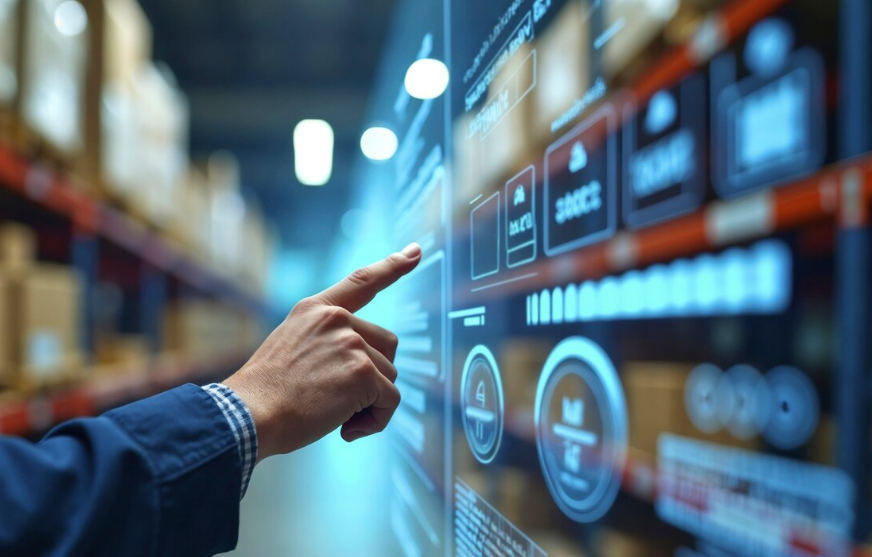The manufacturing industry has undergone significant transformations over the past century. From the introduction of assembly lines to the rise of automation, technological advancements have constantly reshaped the way goods are produced. Among the most impactful innovations in recent years is robotics. As robots become more advanced, they are poised to redefine manufacturing, making processes faster, more efficient, and safer.
In this article, we will explore how robotics is shaping the future of manufacturing, the benefits and challenges it presents, and its potential to revolutionize the industry.
What is Robotics in Manufacturing?
Robotics in manufacturing refers to the use of robotic systems, such as robotic arms, autonomous machines, and drones, to perform tasks traditionally handled by human workers. These robots are equipped with sensors, artificial intelligence (AI), and machine learning algorithms, allowing them to carry out complex tasks with precision, efficiency, and flexibility.
Robotics can be used in various aspects of manufacturing, including:
- Assembly lines: Automating repetitive tasks such as assembly, welding, and packaging.
- Quality control: Using robots for inspection and testing of products.
- Material handling: Robots can transport materials or components within the production floor.
- Finishing and painting: Robots can apply finishes, paint, and coatings with accuracy.
How Robotics is Revolutionizing Manufacturing
1. Increased Efficiency and Productivity
One of the most significant benefits of robotics in manufacturing is the dramatic increase in efficiency and productivity. Robots are capable of performing tasks 24/7 without breaks, fatigue, or loss of focus. This ability to work non-stop leads to shorter production cycles, faster throughput, and higher output.
For example, in automotive manufacturing, robots are used to assemble vehicles with incredible speed and precision. These robots perform tasks such as welding, painting, and even installing parts, allowing the production process to run much faster than if humans were responsible for the same tasks.
- Example: Tesla, the electric vehicle manufacturer, employs a range of robots for assembling its cars. The use of robotics has played a significant role in scaling production and meeting growing demand.
2. Improved Quality Control
Robots equipped with advanced sensors and AI can perform quality control tasks with high precision, reducing the likelihood of defects and ensuring consistent product quality. Unlike humans, robots do not experience fatigue, which means they can inspect products with the same level of accuracy every time.
AI-driven robotic systems can also analyze data in real-time, identifying even the smallest defects that may be overlooked by the human eye. This ability to detect issues early in the production process helps reduce the number of defective products and minimizes the cost of rework or returns.
- Example: In the electronics industry, robots are used for precision assembly and testing of circuit boards. The robots are capable of detecting even minor faults, ensuring that each product meets strict quality standards.
3. Safety Improvements
Robotics in manufacturing also enhances workplace safety by performing dangerous or hazardous tasks that would be risky for human workers. Robots can be deployed in environments where there is exposure to extreme heat, toxic chemicals, heavy lifting, or sharp machinery, reducing the risk of injuries and accidents.
For example, industrial robots can be used in chemical plants or mines where humans might be exposed to harmful substances or hazardous conditions. By allowing robots to handle dangerous tasks, manufacturers create safer environments for their employees.
- Example: In the metalworking industry, robots can handle tasks such as welding or cutting metal in high-temperature environments, reducing the likelihood of burns or other injuries to workers.
4. Cost Reduction
While the initial investment in robotics can be significant, the long-term cost savings are substantial. Robots help reduce labor costs, especially in tasks that would require multiple workers. Additionally, robots reduce the cost of mistakes and waste, leading to more efficient production.
Automation also reduces downtime and maintenance costs, as robots can predict and address maintenance needs through predictive analytics. By maintaining smooth operations, robots contribute to the overall profitability of manufacturing businesses.
- Example: Companies like Fanuc provide robotic systems that are equipped with sensors to monitor wear and tear, allowing for preventive maintenance to avoid costly downtime.
5. Customization and Flexibility
One of the most exciting prospects for the future of robotics in manufacturing is the ability to offer greater product customization. Robots can be easily reprogrammed to perform different tasks or produce different types of products, allowing manufacturers to respond quickly to market demands and produce smaller batches of customized products.
This level of flexibility enables manufacturers to offer personalized products without sacrificing efficiency. The ability to produce made-to-order goods on a large scale could significantly impact industries like apparel, electronics, and consumer goods.
- Example: Boeing, a leading aircraft manufacturer, uses robotic systems to customize components for different aircraft models. This adaptability enables the company to streamline production and reduce lead times.
6. Collaboration Between Humans and Robots (Cobots)
Rather than replacing human workers, many robots in modern manufacturing work alongside people in a collaborative environment. These robots, known as cobots, are designed to assist human workers in performing tasks, improving productivity and reducing the physical strain on employees.
Cobots are equipped with sensors and safety features that allow them to work safely in close proximity to humans. This collaboration enables workers to focus on higher-level tasks, such as supervision, problem-solving, and quality control, while robots handle repetitive and physically demanding tasks.
- Example: In electronics manufacturing, cobots are often used to assist with assembly tasks, allowing workers to focus on delicate or complex assembly steps while the robot handles repetitive motions.
Challenges and Considerations
1. High Initial Investment
While the long-term benefits of robotics in manufacturing are clear, the initial cost of implementing robotic systems can be high. Small and medium-sized businesses may struggle to afford the upfront investment required to integrate robots into their operations.
However, the cost of robotic systems has been steadily decreasing, and with the rise of automation-as-a-service models, smaller manufacturers may soon have access to affordable robotics solutions.
2. Job Displacement
A concern that often arises with the introduction of robotics is the potential displacement of human workers. While robots can take over repetitive or dangerous tasks, they may also replace jobs that were traditionally done by people.
However, robots are also creating new jobs in fields such as robotics maintenance, programming, and oversight. The key is to ensure that workers have access to training and education to transition into these new roles.
3. Integration Complexity
Integrating robotics into existing manufacturing processes can be complex and may require significant changes to infrastructure, workflows, and employee roles. Companies must carefully plan the integration process to ensure that robots complement human workers and add value to the production line.
4. Cybersecurity Risks
As manufacturing becomes more automated, the risk of cyber threats grows. Robots and AI systems are connected to the internet, making them vulnerable to hacking and malicious attacks. Manufacturers must invest in robust cybersecurity measures to protect their robotic systems and sensitive data.
The Future of Robotics in Manufacturing
The future of robotics in manufacturing looks bright, with continuous advancements in AI, machine learning, and automation technology. We can expect to see even more sophisticated robots that can adapt to changing environments, interact with humans in more intuitive ways, and improve the overall efficiency of production processes.
Additionally, the development of 5G networks and edge computing will enable robots to communicate and collaborate more effectively, further enhancing the potential for smart manufacturing and the Industry 4.0 revolution.
Conclusion
Robotics is set to play a crucial role in the future of manufacturing. By enhancing productivity, improving quality control, ensuring safety, and reducing costs, robots are transforming how goods are produced. However, challenges such as high initial investment and job displacement need to be addressed to ensure that the benefits of robotics are shared across the entire industry.
As technology continues to evolve, robotics will undoubtedly become even more integrated into manufacturing processes, leading to more efficient, flexible, and customized production systems. The future of manufacturing is undoubtedly robotic, and the possibilities are exciting.


